When someone from outside the architectural profession hears that someone is an architect, they think of drawing and designing houses or buildings. Diving deeper, they think of an office or even an onsite job. But with the speed at which technology is growing, you don’t have to be in an office to do architectural work, in fact, you don’t even have to be in the same country. A majority of the 3D rendering work or, anything done on AutoCAD and similar programs, can be done remotely from anywhere in the world. Jobs like 3D Architectural Design, Architectural Drafting, and Building Information Modelling.
AutoCAD
AutoCAD is a piece of software that allows you to create both 2D and 3D models. The CAD portion of the name stands for computer-aided design. This tool is what allows for several jobs to be done remotely. There are several programs that do what AutoCAD can, but AutoCAD is the preferred CAD program as it has been out since 1982. It’s carved out a very prominent place within the CAD community, akin to Photoshop in the editing community. Its flexibility is what allows it to be used in multiple industries. Although it is widely used in architecture, it has also seen use in the automotive, aerospace, food, and medical industries.
3D Rendering
Putting it simply, 3D rendering is the process of converting 3D models into 2D images on a computer. Another oversimplification, but this is the core job of most remote architecture and design employees. As CAD programs advanced the quality of 3D rendered images has increased to hyper-realistic quality, oftentimes leaving viewers unaware that the item they’re looking at is just a rendering. This is especially useful in industries where you need models. Interior designers can just render an entire house as opposed to buying the actual products for a model home. Products in a catalog no longer need to be photographed as a designer can just create an image that takes the best qualities of the product and makes them stand out.
3D Architectural Designer
Architectural Designers is an umbrella plan. In short, it entails the creation of layouts, plans, and designs of structures and landscapes while complying with the proper regulations. Occasionally it involves presenting to clients, but in a remote setting usually, the manager takes over this. They need to be adept with whatever CAD software their employer chooses, but switching between them isn’t too time-consuming. The education level required for this job ranges from a bachelor’s degree to a master’s, where a master’s degree is needed to advance to higher positions.
Architectural Drafter
Remote Architectural Drafters create technical drawings or drafts with CAD software. These technical drawings visually explain how something will function once built. Originally these were done with pencil and paper, and sometimes they still are, but the finished product, when done remotely, is always a CAD finished project that is saved as a PDF. CAD software has actually reduced the time it takes to create technical drawings as you can change the proportions easily, as opposed to redrawing everything from scratch.
Building Information Modeling (BIM)
Building Information Modeling is a process for creating and managing information on a construction project across the entire building’s lifecycle. It allows designers, construction workers, and clients to remain consistent and collaborate more effectively. This reduces the overall cost of the project as aborted work and other mistakes will be minimized.
While there is a wide variety of BIM software, they all share the same basic principle, allowing all parties involved in a building’s creation to have access to all of the technical information needed to make any corrections or adjustments. This is an ongoing process as even after the building is built, any remodeling, construction, or deconstruction is still logged and collaborated on within the software.
Landscape Designer
Also called landscape architects, they create functional outdoor spaces in both the public and private sectors. Traditionally these jobs used hand-drawn plans but CAD programs have taken over. They are able to create drafts of areas, populating them with plants and structures. With a 3D model, the time it takes to design and redesign a space has been expedited from when everything was hand-drawn. In addition to projects in the private sector, they have also been know to work government jobs, assisting in the planning of roads, parks, and other public areas. They work closely with their clients, other architects, and contractors to do their work. Often times remote landscape designers in the process of getting their license will work under a licensed designer and help out with the overall workload, freeing up the head designer to communicate with all involved parties more.
Retail Space Designer
These designers focus on designing and constructing retail spaces. This involves combining a wide range of skills to create brand-focused retail environments. They work across a wide range of industries, creating offices for healthcare professionals and corporate settings as well. These designers also have some marketing skills as they mix design with branding. They integrate brand elements into the workspace while focusing on maximizing customer experience. Having your brand incorporated into your shop or shops strengthens your overall brand identity.
With the introduction of CAD programs, they are able to create mock-ups at a much faster rate than before. In addition to this, the mock-ups are increasing in quality, with some programs making them look lifelike.
Wrap Up
Many jobs in the architectural industry can be done remotely. They can still perform a majority of the tasks in-office staff can, in some cases all of the responsibilities are the same. In the event that there is a job you want to hire remote staff for but you don’t see it listed, try contacting your remote staffing partner, chances are they will be able to create a custom role fit for you.





